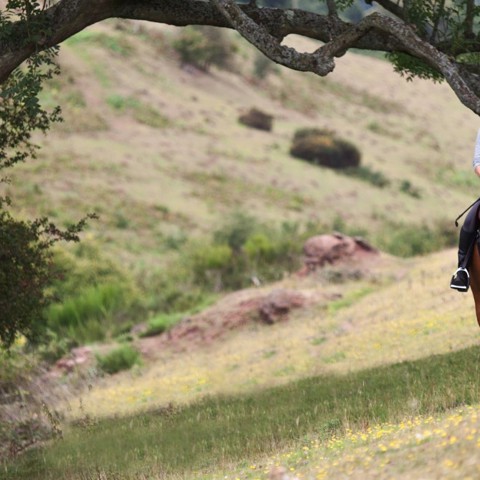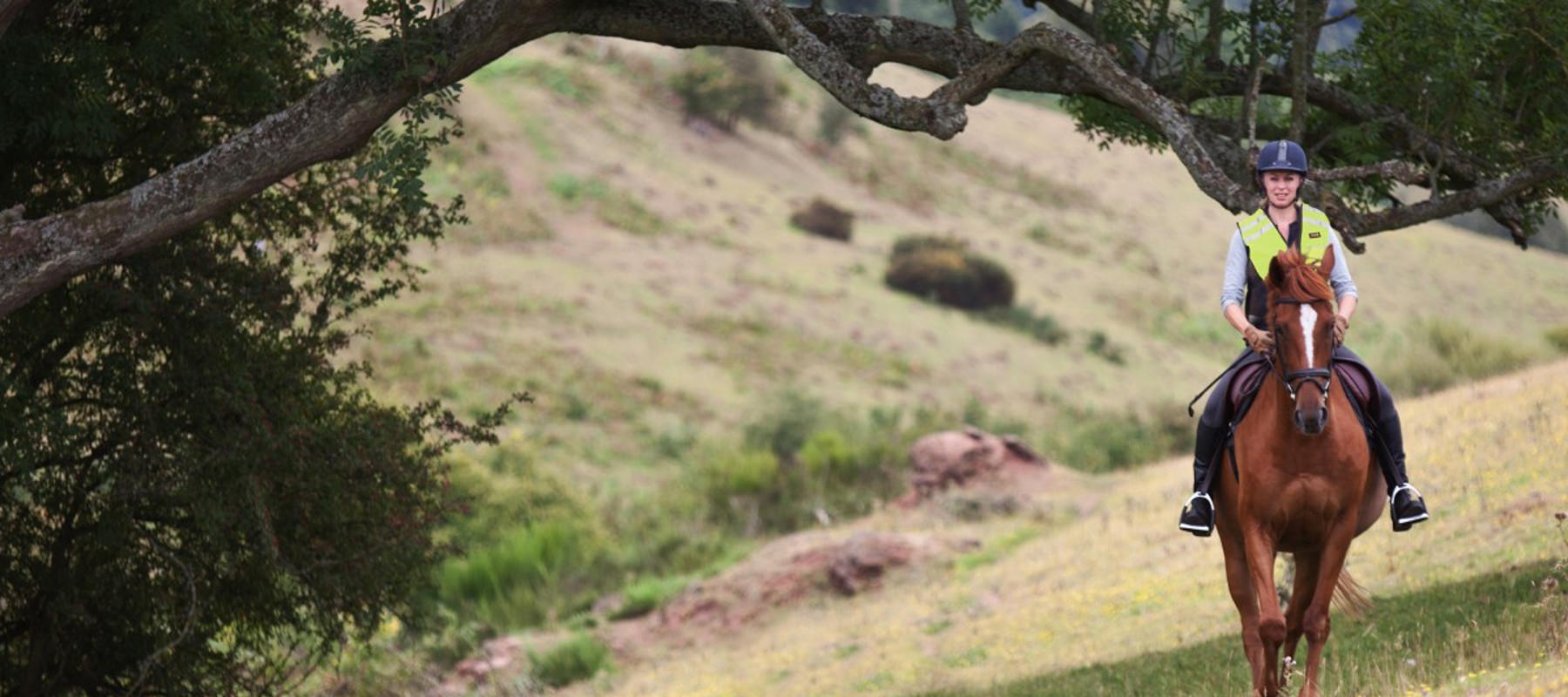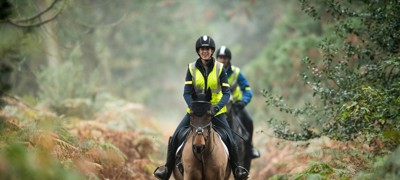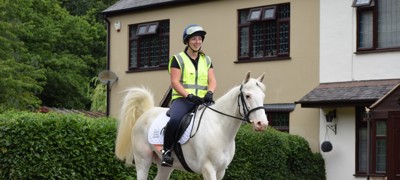The open spaces of heather and grass covered uplands are home to sheep, grouse and wildlife, and an important part of our eco-system. Many of the bridleways and traditional riding routes in the uplands are ancient tracks linking one valley with another.
It is important to know the potential hazards you may encounter as the terrain is variable, from green or sandy roads to faint stone tracks and some ground being very rocky with sharp stones. Seasonal changes can affect the routes too, with ground being soft or potentially boggy.
On peat uplands, some bridleways may be trods – historic routes where slabs were laid across the path to support packhorses or traffic, many laid by early monks on trade routes. Modern day equivalents have been used on some trails, especially National Trails such as the Pennine Bridleway and the Cleveland Way. Keep to the trods as you may sink in soft ground off the slabs.
Will my horse manage?
Riding out on hills and uplands is often a longer adventure, so it is important to ensure your horse is fit enough for the task.
- Steep slopes – your horse will need to negotiate steep uphill and downhill gradients confidently and comfortably. Coming downhill can often be more challenging, so you may prefer to get off and lead
- Terrain – some tracks may be stony, so consideration for your horses’ feet is required. Do they need to be shod or wear hoof boots?
- Water – is your horse confident through water? You may encounter fords, streams and shallow river crossings
- Bridges – you might need to ride or lead over bridges
- Gates – there may be gates on your route, so make sure you and your horse can negotiate them safely. Remember – heels to hinges. Read our advice about off-road gates here
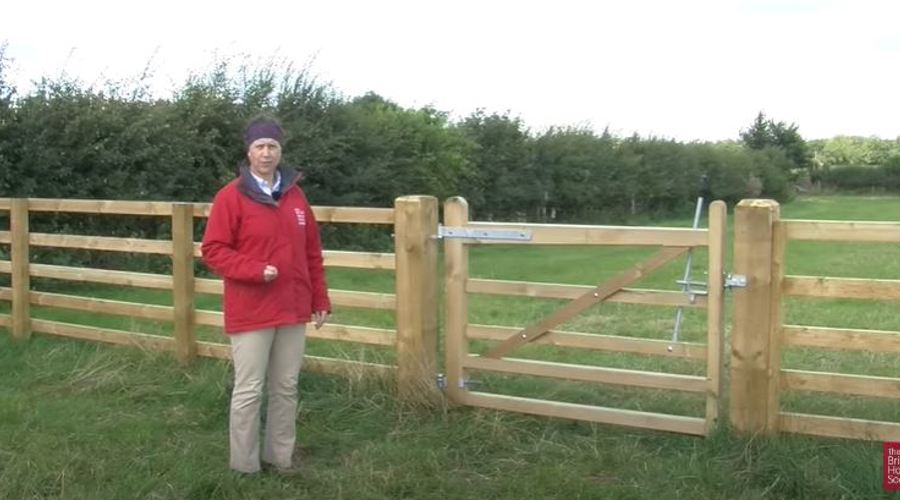 play-circle
play-circle
Watch
BHS Advice on Opening Gates
Potential hazards
- Soft and boggy ground is the most widespread hazard to riders. If you are on a track, look out for areas of dark brown, wet peat. These areas should be avoided by going. carefully round the edge. If your horse is unwilling to go forward, get off and lead him or give him to your companion while you check the ground on foot.
- Many of the heather moors are managed for grouse and the shooting season lasts from 12 August to 10 December. The bridleways must remain open and shoots will take careful account of public access. You may find that gunfire is closer than you expected. If you come across a shoot, please respect others and wait while a drive is in progress.
- Some areas are used for military training. These are generally well-signed, but be aware of artillery firing in the distance and soldiers suddenly appearing from cover.
- The RAF train at low altitude in remote areas. Wear hi-vis on both rider and horse to make yourself visible to pilots.
- Surfaces – very stony ground, rock slabs and loose scree can be difficult to ride over. Lead your horse in-hand if required.
- Weather – check the forecast before you set out. High winds can make riding difficult, and poor visibility can impact your sense of direction. If you are caught out by deteriorating conditions, it can be safer to return the way you came.
Safety First
- Never ride alone. A party of three is best in case something goes wrong. Tell someone where you are going and how long you expect to be. If your ride will last over several days, make sure you share this detail with someone. Be aware of the risk of no-one knowing your location if you change your route from your original intention.
- Leave dogs at home. This is sheep rearing country and the habitat of many ground-nesting birds. You cannot fully control a dog while mounted.
- Leave gates as you found them. Close and secure all gates, however difficult, if they were closed when you reached them.
- Allow plenty of time to complete your ride.
What should I take with me?
- Hi-vis clothing for you and your horse
- Windproof and waterproof clothing, suitable to the weather conditions
- A mobile phone which includes an ICE (In Case of Emergency) contact number
- A medical armband – add the emergency details for you and you horse
- A headcollar and lead rope for leading over difficult terrain. Safety first – in an emergency trying to put on a headcollar may lose vital time. Always wear the headcollar under the bridle for quick access and have the rope either quick-release knotted round the horse’s neck or rolled up and clipped to a D-ring.
- A breast plate will prevent your saddle slipping back on steep climbs
- Sun protection for exposed skin. Protect any pink patches on your horse as well
- A sponge can be used to cool the horse when passing fords or streams
- A saddle bag for food, drink, spare clothing and maps
- A basic first aid for horse and rider
- A hoof pick, a penknife and baler twine
- A temporary shoe replacement/hoof boot in case a shoe is lost
- A whistle, bright torch with full batteries and foil survival blanket

